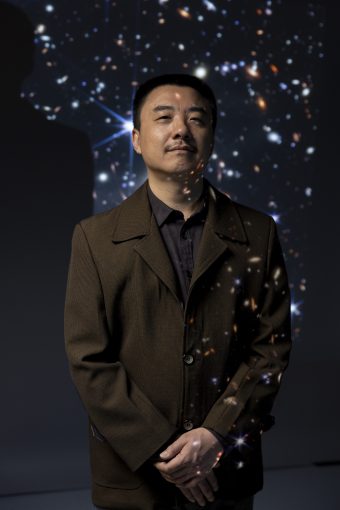
Oct. 9, 2023
Contact: Eric Stann, 573-882-3346, StannE@missouri.edu
On Oct. 14, millions of people across North, Central and South America will be able to view an annular solar eclipse, or ring-shaped eclipse, as it passes overhead in the sky. Here, Haojing Yan, associate professor of physics and astronomy, explains the importance of this rare celestial event that will not occur again until 2046.
What is a solar eclipse?
The Earth is orbiting the sun, and our moon is orbiting the earth, and the two orbital planes are close to each other. As such, there are instances when all three are aligned in space, with the moon between the sun and the Earth. A solar eclipse happens when the viewer, the moon and the sun are aligned, and the moon is blocking the sun from view, or in other words, the sun is “eclipsed.” A total solar eclipse occurs when the apparent size of the moon is about the same as the sun when viewed from the Earth’s surface, and if the alignment is perfect the moon can completely block the sun. The next total solar eclipse will occur on April 8, 2024.
What an annular solar eclipse, and why is it described as a “ring of fire” eclipse?
An annular solar eclipse can be regarded as a special instance of a total solar eclipse: As the moon is orbiting the Earth in an elliptical orbit — in other words, not a perfect circle — its apparent size as viewed from the Earth changes slightly over time. If the alignment happens when the moon is further away from the Earth, the moon’s apparent size cannot completely cover the sun and will leave the outskirt of the sun still visible as a “ring of fire” around the moon.
Why will people in Missouri experience a partial eclipse while people elsewhere will experience a total solar eclipse?
Whether one sees a total or partial eclipse depends on the alignment of the viewer, the moon, and the sun. The Earth is big enough so that when a viewer is in a perfect alignment, others located farther away are not. As Earth is rotating, an invisible line connecting the sun and the moon is sweeping over the surface of the Earth, creating what’s known as a zone. People within different areas of this zone are in perfect alignment to see a total eclipse at different times, while those located outside of the zone will only see a partial eclipse.
What types of research opportunities does this event provide for scientists?
A total solar eclipse has provided opportunities for astronomers to study the outermost part of the sun’s atmosphere called the corona. While the sunlight is blocked, the sun’s faint corona is not blocked by the moon, and this allows scientists to study different aspects of the sun’s outer atmosphere, from which one can infer a lot about its interior. A total solar eclipse has also been used before to test the theory of general relativity, which says that light can be bent by a large clump of mass on its path. The short moment of darkness during a total solar eclipse also reveals stars close to the sun’s position, like at night, and scientists can measure the tiny offsets of these stars relative to their positions when the sun is not there. However, thanks to technological advancements, we do not need to wait for a solar eclipse to study the sun or to test general relativity, but they are still really special events to witness.
Editor’s note:
Yan is available for interviews with reporters on the topic. Please contact Eric Stann at 573-882-3346 or StannE@missouri.edu to schedule an interview.




